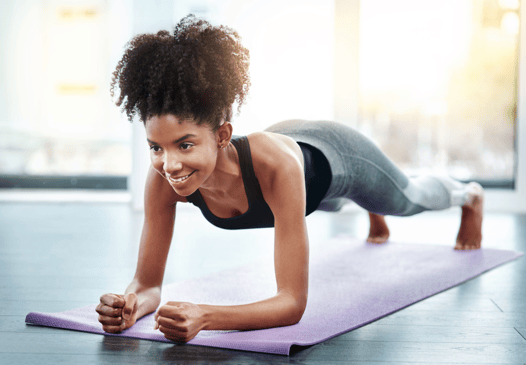 Runners are generally good at doing the same thing over and over again, day in and day out: RUNNING! Oftentimes they will neglect doing some of the components of what runners refer to as “the little things” that pay huge dividends in overall performance and how you feel while running. The little things include sleeping enough, eating right, staying hydrated, maintaining flexibility, and core strength, and the list goes on. When there is limited time in the day to get in a quality run, the thought of cutting a run one or two miles short to do core and flexibility work is often quickly neglected.
Runners are generally good at doing the same thing over and over again, day in and day out: RUNNING! Oftentimes they will neglect doing some of the components of what runners refer to as “the little things” that pay huge dividends in overall performance and how you feel while running. The little things include sleeping enough, eating right, staying hydrated, maintaining flexibility, and core strength, and the list goes on. When there is limited time in the day to get in a quality run, the thought of cutting a run one or two miles short to do core and flexibility work is often quickly neglected.
Core strength and endurance is a critical component that should not be neglected by anyone, especially runners. Since running is a repetitive movement, the muscles in the body can become imbalanced when cross training, strength training, and core conditioning are not included in the training plan, which can lead to injury.
Here are 5 simple exercises that you can incorporate into your daily training plan with no additional equipment. All you need is 5 minutes!
- Planks:
 Lay flat on your stomach and tuck your toes underneath. Raise yourself up onto your elbows and toes. Hold this position, maintaining a straight line between the top of your head and your tailbone. Do not let your hips sag down too low or press up too high.
Lay flat on your stomach and tuck your toes underneath. Raise yourself up onto your elbows and toes. Hold this position, maintaining a straight line between the top of your head and your tailbone. Do not let your hips sag down too low or press up too high.
- Bird Dogs: Start in a tabletop position with your wrists beneath your shoulders, knees below the hips, and a flat back. At the same time, extend one arm out in front of you as you extend the opposite side leg behind you. Bring the elbow and knee together in the middle to complete the movement. Complete sets on both sides of the body.


Bridges: Lie flat on your back with your knees bent and feet flat on the floor. Bring your heels as close to your hips as you can without pain. Press your hips up as high as you can while keeping your feet in contact with the ground. Hold for a 2-count and return to the start position.
- Hip Hikes: Standing tall in a neutral position with one foot flat on the ground on an elevated surface, drop the opposite side of the body below your pelvis on the side of your grounded foot. Activate the grounded leg’s glute to return back to the start position. Complete sets on both sides of the body.


Try these 5 exercises before you go out for your next run. Start out completing just one set of each exercise. Hold the plank with good form as long as you can and build up to 1 minute. For the rest of the exercises, gradually build up to 3 sets of 10 to 12 repetitions. Once you get the hang of this, it will not take you any longer than five minutes to complete. This method will give you a great start to adding core exercises to your running routine.
Here's another core workout you can try.
This blog was written by Stephanie Kaiser, Health Fitness Specialist. To find out more about the NIFS bloggers click here.



 you are targeting).
you are targeting).





